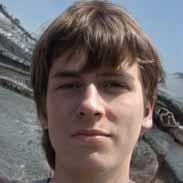Citric Acid Cycle Flashcards, test questions and answers
Discover flashcards, test exam answers, and assignments to help you learn more about Citric Acid Cycle and other subjects. Don’t miss the chance to use them for more effective college education. Use our database of questions and answers on Citric Acid Cycle and get quick solutions for your test.
What is Citric Acid Cycle?
The Citric Acid Cycle, also known as the Krebs Cycle or the tricarboxylic acid cycle, is a metabolic pathway that occurs in most living organisms and is critical for releasing energy from food sources like carbohydrates, proteins and fats. The cycle involves a series of biochemical reactions that convert carbon atoms from acetyl CoA into carbon dioxide. This process helps to generate molecules used by cells to produce adenosine triphosphate (ATP) which is used as an energy source. The first step of the Citric Acid Cycle begins with the condensation of two molecules of acetyl CoA with one molecule of oxaloacetate forming citrate. This reaction requires two molecules of coenzyme A (CoA) and is catalyzed by an enzyme called citrate synthase. The citrate then returns to oxaloacetate through a series of reactions known as decarboxylation, oxidation-reduction and hydration. These reactions involve enzymes like aconitase, succinate dehydrogenase and fumarase respectively which help to form intermediate products such as α-ketoglutarate, succinyl CoA, fumarate and malate before finally returning back to oxaloacetate. Once back at oxaloacetate, another molecule of acetyl CoA combines with it forming citrate once again before beginning another round around the cycle. Each time this happens two more molecules of carbon dioxide are created while three high-energy phosphate bonds are released in exchange for four hydrogen atoms which are used in NADH+H+ production and then stored inside mitochondria until they’re needed elsewhere in the body for other processes such as muscle contraction or nerve transmission. In addition to providing energy for cellular activities, the Citric Acid Cycle plays an important role in regulating physiological processes such as glucose metabolism, fatty acid oxidation and amino acid catabolism among others. It also helps recycle key molecules such as NAD+ so they can be reused for further energy production later on down the line making it one of the most important metabolic pathways present within our bodies today.








